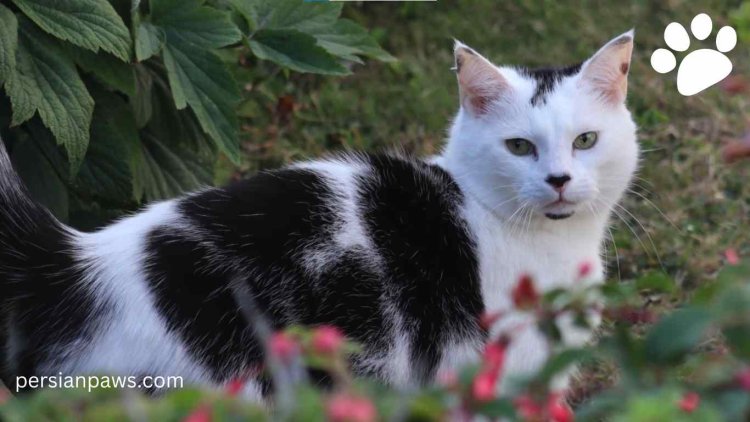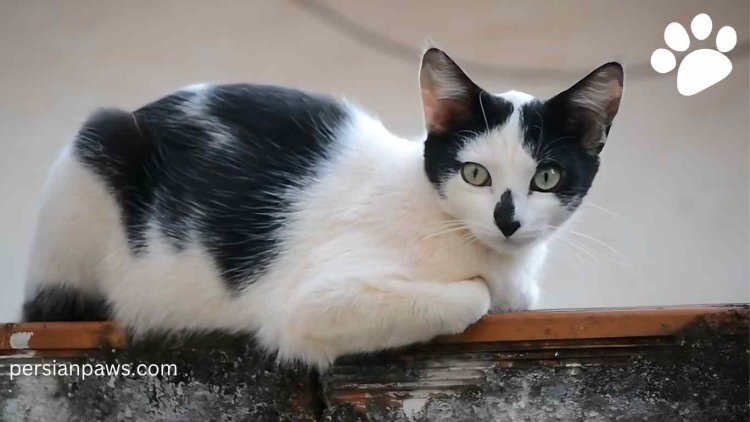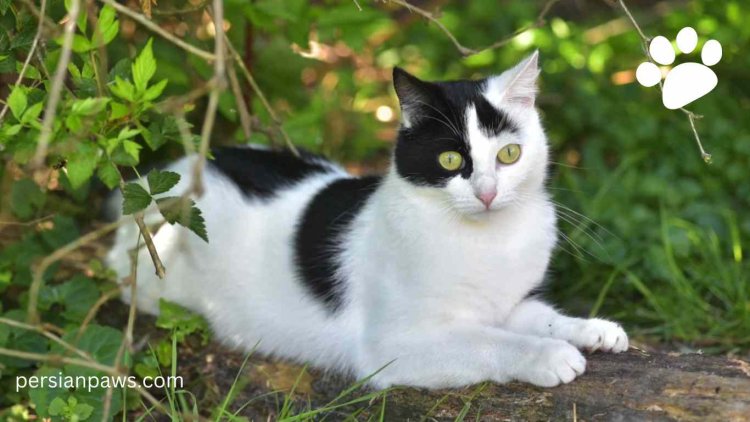Harlequin Cats - A Detailed Guide
Harlequin cats have unique patches of color, resembling a checkerboard. They are playful, friendly, and known for their striking, colorful coats.

Table of Contents
Harlequin Cats are special because they have patches of different colors on their fur, like a patchwork quilt. Each cat looks unique, with spots and splashes of various colors all over their bodies. It's like they're wearing a colorful coat that no other cat has.
History of Harlequin Cat
Beginnings in Japan
The history of the Harlequin cat dates back to ancient Japan, where they were first bred in the early 1900s. These cats were known as "Mi-ke" or "triple-stripe" cats due to their unique tri-colored coat patterns. At the time, these cats were highly valued and considered a symbol of good luck and prosperity.
Origin
The origins of Harlequin cats are a mystery. Unlike more established breeds with well-documented histories, Harlequin cats developed more organically.
They are not recognized as a separate breed by major cat fancier associations like the Cat Fanciers' Association (CFA) or The International Cat Association (TICA).
Instead, the term "Harlequin" refers to a specific pattern that can occur in various breeds, including the Persian, Domestic Shorthair, and Siamese.
Physical Characteristics
Unique Coat Patterns and Color Combinations

One of the most defining features of Harlequin cats is their unique coat pattern. The Harlequin pattern is typically 75-80% white, with large, colorful patches distributed randomly across the body. These patches can come in various colors, including black, blue, red, cream, and even tortoiseshell. The head usually has one or two patches of color, and the tail is often entirely colored.
Size and Build
Harlequin cats can vary in size and build since the pattern can appear in multiple breeds. However, they generally have a balanced body with a graceful yet tough appearance. Their eyes can be any color, including blue, green, or even odd-eyed (each eye a different color).
The behavior of Harlequin Cat
Temperament
Harlequin cats are known for their playful and affectionate nature. They tend to form strong bonds with their human companions and enjoy interactive play. These cats are intelligent and
curious, often exploring their environment with great excitement.
Interaction with Humans and Other Pets
Harlequin cats are generally sociable and get along well with other pets, including dogs and other cats. Their friendly behavior makes them ideal companions for families with children. They grow on human interaction and can become lonely if left alone for a long period.
Real Story:
"Once, a Harlequin cat named Whiskers charmed her way into the neighbor's heart, becoming their unofficial welcome every morning."
Health Considerations
Genetic Tendency
While Harlequin cats are generally healthy, they can inherit genetic tendencies from the breeds they belong to. For example, if a Harlequin-patterned cat is a Persian, it may be prone to conditions common in Persians, such as polycystic kidney disease (PKD) or respiratory issues.
General Care Needs
Grooming:
Regular grooming is essential to keep their coat in top condition, especially for long-haired Harlequin cats. Brushing them several times a week helps prevent matting and reduces shedding.
Diet:
A balanced diet is crucial for maintaining their health. High-quality commercial cat food that meets their nutritional needs is recommended. Always ensure they have access to fresh water.
Veterinary Care:
Routine veterinary check-ups are vital to monitor their overall health and catch any potential issues early.
Tips for Owners
What to Expect When Adopting a Harlequin Cat
Adopting a Harlequin cat can be a rewarding experience. These cats are beautiful and bring joy and companionship to any home.
However, potential owners should be prepared for the commitment required to care for them.
Care Requirements
Interactive Play:

Harlequin cats love to play. Providing them with toys and engaging in interactive play sessions will keep them mentally and physically fit.
Socialization:
Since they grow on human interaction, it's important to spend quality time with them. Consider adopting another pet if you’re frequently away from home to keep your Harlequin cat company.
Environment:
Ensure your home is safe and enriched with scratching posts, climbing trees, and cozy resting spots.
Ensuring Happiness:
A happy Harlequin cat feels loved and secure. Regular vet visits, a nutritious diet, and plenty of affection will go a long way in ensuring their well-being. Pay attention to their behavior and be prepared to address any signs of distress or illness.
Facts About Harlequin Cat
Fact 1:
Harlequin cats are often mistaken for Tuxedo cats due to their similar color patterns. However, Tuxedo cats have more uniform and symmetrical markings.
Fact 2:
The term “Harlequin” is derived from a character in Italian theater, known for wearing a costume with colorful patches. The name perfectly captures the playful appearance of these cats.
Personal Stories

"We can't forget the time Luna, our Harlequin cat, decided to 'help' with the laundry by nesting in the fresh, warm clothes."
"Meeting a Harlequin kitten for the first time, the breeder shared how it took only a few moments for the playful and kind nature of the breed to shine through."
Harlequin Cats vs Other Breeds
Physical Characteristics
Harlequin cats stand out due to their unique coat patterns, but how do they compare to other breeds? For instance, while both Harlequin and Calico cats have colorful patches, Calicos have a more defined and often symmetrical pattern, whereas Harlequin patterns are more random.
Behavior
Compared to breeds like the Siamese, known for their demanding nature, Harlequin cats are generally more calm but equally affectionate. They might not "talk" as much as Siamese cats but will still communicate their needs effectively.
Health Considerations
Breeds like the Maine Coon, known for their strong health, may have fewer genetic tendencies compared to a Persian with a Harlequin pattern.
Common Misconceptions
One common misconception is that Harlequin cats are a separate breed. It's essential to understand that Harlequin refers to a pattern rather than a breed. This difference helps set realistic expectations for potential owners.
Conclusion
Harlequin cats are a delightful addition to any home, offering a blend of beauty, intelligence, and affection. Their unique coat patterns make them visually striking, while their playful temperament ensures they bring joy to their human companions. Whether you're a seasoned cat owner or considering adopting your first cat friend, a Harlequin cat can be a wonderful choice.
By understanding their origins, physical characteristics, and care needs, you can provide a loving and nurturing environment for your Harlequin cat. Remember, every cat is unique, and getting to know your new pet is part of the joy of pet ownership. Best of Luck!
What's Your Reaction?















